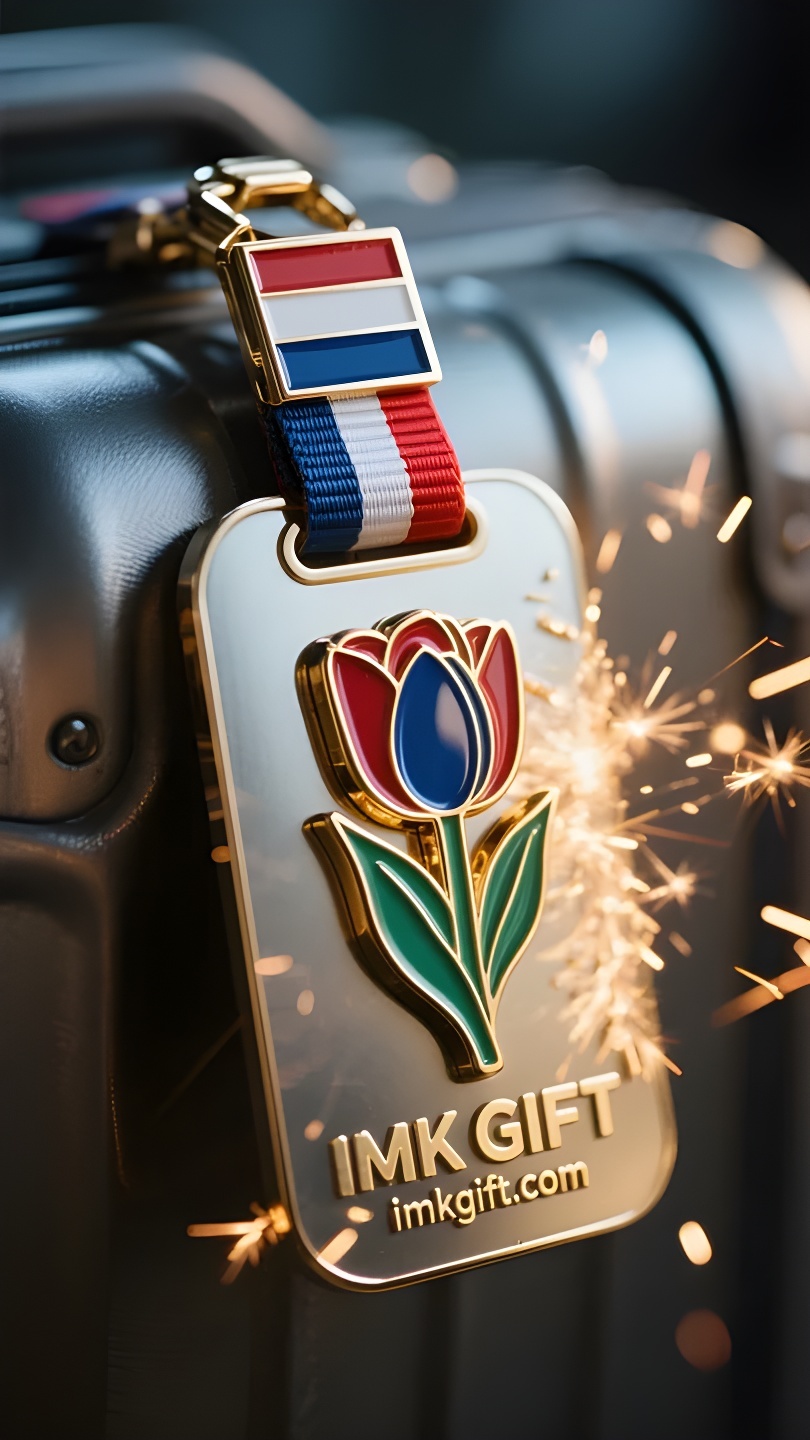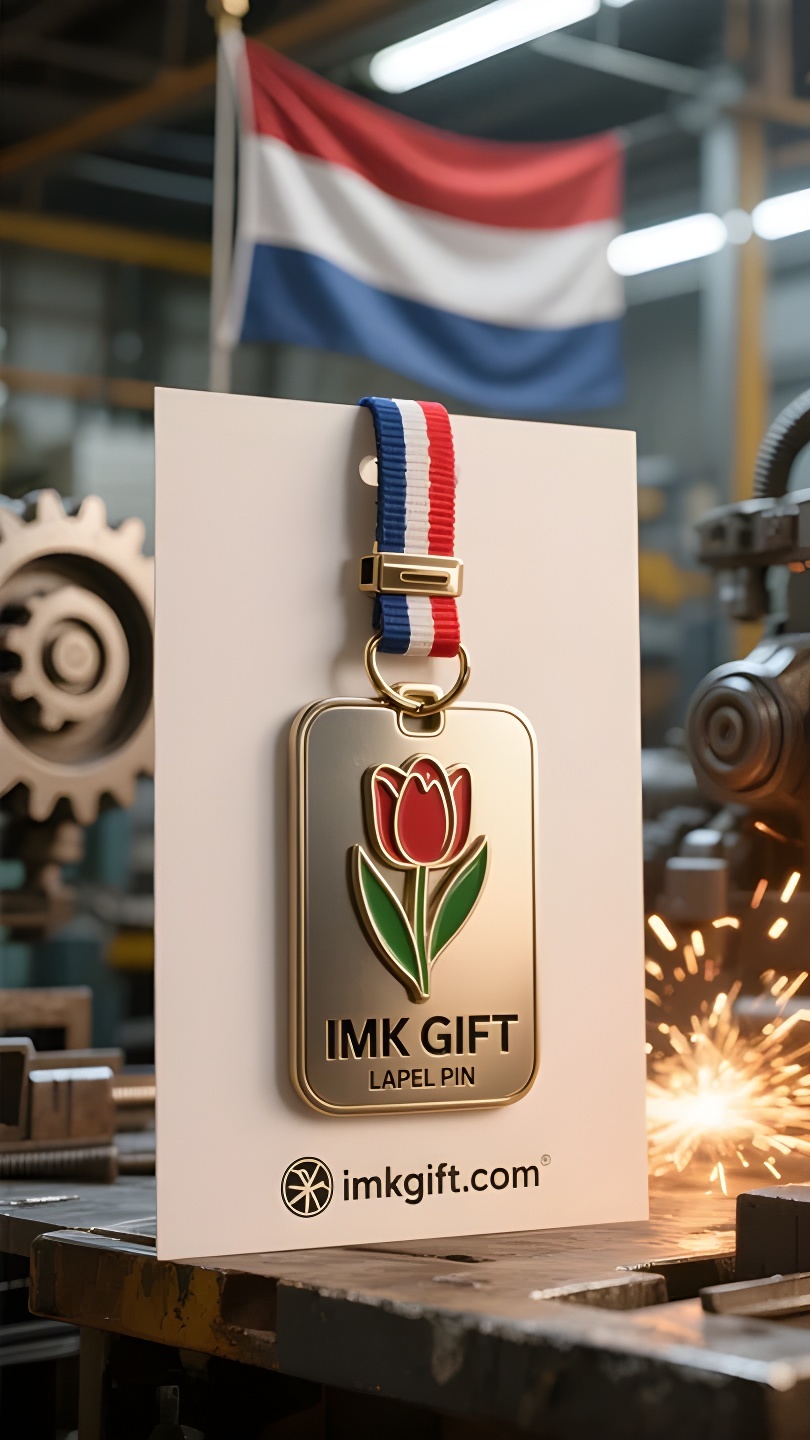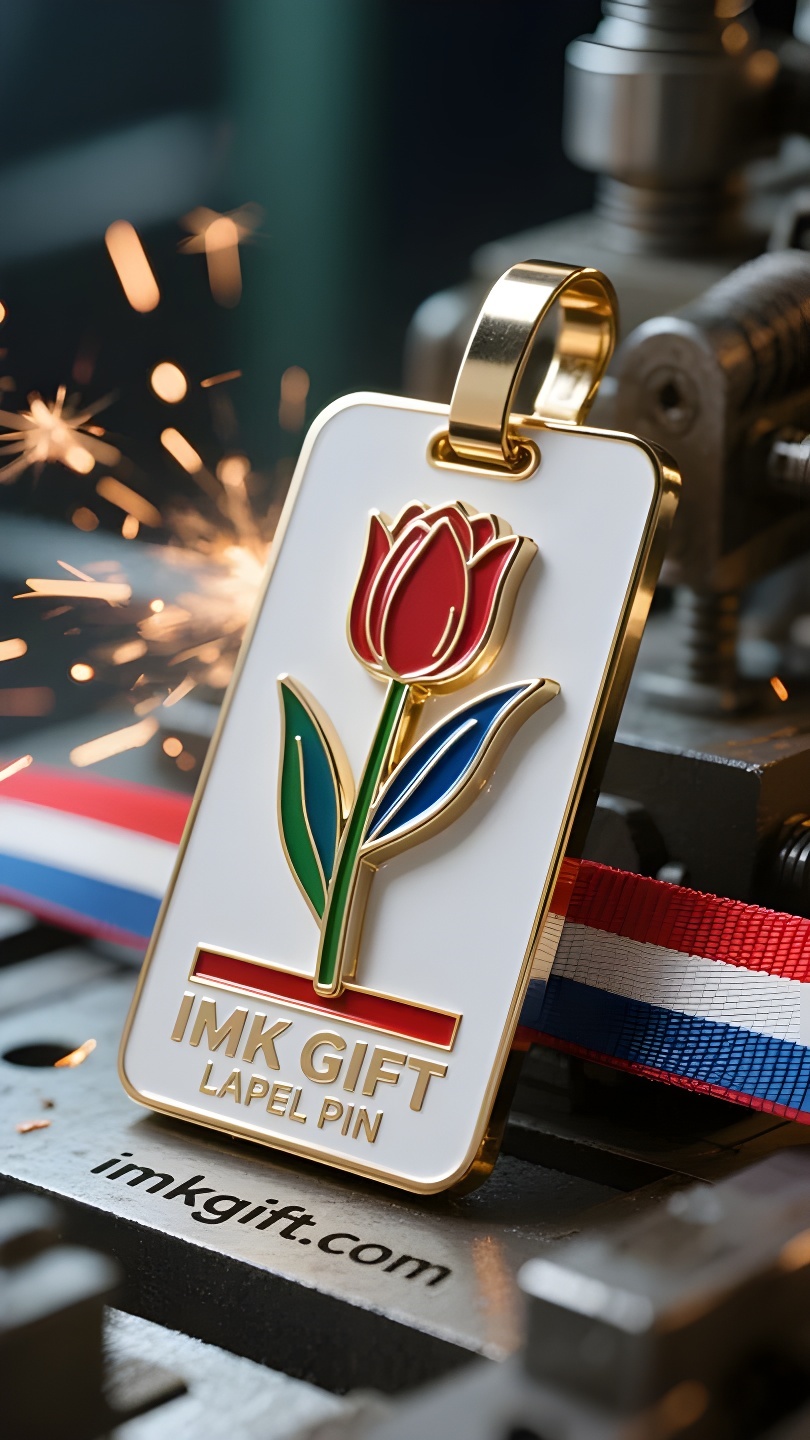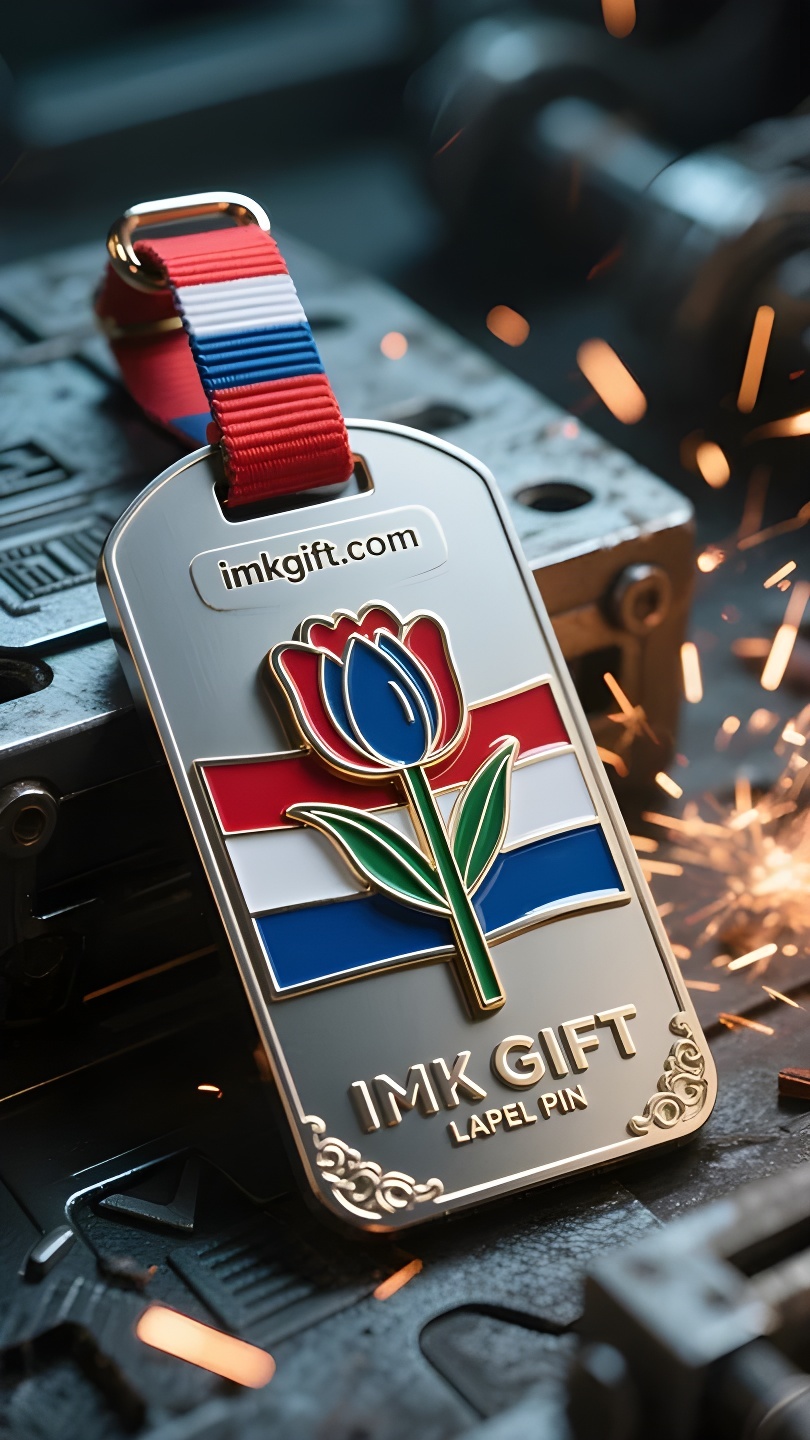in984-De-bloem-van-moed-op-de-koffer-de-Nederlandse-rood-wit-blauwe-apocalyps
▼
Mei is het seizoen waarin de tulpen in Nederland bloeien. Zodra de molens langs het kanaal beginnen te draaien, passeren er talloze koffers met tulpvormige bagagelabels via Schiphol. Deze metalen platen in de vorm van de nationale bloem maken een scherp geluid als ze tegen elkaar botsen, net als het karakter van dit laagland dat bloeit ondanks de storm. De rode, witte en blauwe kleuren van de Nederlandse vlag zijn op slimme wijze gecombineerd op het bagagelabel van de tulp. De rode bloemblaadjes symboliseren de moed van de “Zeekooier” in de 17e eeuw om door de golven te snijden. Op de witte metalen voet is het pure geloof in Delfts blauw gegraveerd en het blauwe lint lijkt op kruisende kanalen die de richting aangeven. Op het moment dat een reiziger het touw omdoet, zet hij of zij de Nederlandse gedachte van “strijden met water voor land” voort: windmolens worden gebruikt om de getijden te bestrijden en tulpenbollen om wortel te schieten in zoute, alkalische grond. Op deze metalen plaquette staat vaak de tekst “Home is where the heart is”, net als op de schepen van de Vereenigde Oostindische Compagnie die vroeger tulpenbollen over de oceaan vervoerden. Van Turkije tot Leiden, van economische crisis tot de kroning tot nationale bloem: deze bloem heeft de wereld geleerd dat haar ware waarde niet in haar kortstondige, adembenemende schoonheid ligt, maar in haar vitaliteit die tijd en ruimte overstijgt. De bagage vol tulpen bereikt op een lentedag de overkant van de bloeiende kust. Net zoals Nederland, dat na tachtig jaar oorlog eindelijk onafhankelijk werd, met de driekleur wilde bewijzen dat de meest schitterende bloei altijd begint met een doorzettingsvermogen dat diep onder de grond ligt.
May is the season when Dutch tulips bloom. When the windmills by the canal start turning, countless suitcases with tulip luggage tags are passing through Schiphol Airport. These metal tags shaped like the national flower make a crisp sound when they collide, just like the character of this lowland nation that still blooms after experiencing storms. The red, white and blue colors of the Dutch flag are cleverly integrated on the tulip luggage tags – the red petals symbolize the courage of the “sea coachman” in the 17th century to cut through the waves, the white metal base is engraved with the pure faith of Delft blue pottery, and the blue ribbon is like the criss-crossing canals, guiding the direction. The moment every traveler ties it, they are continuing the spiritual code of the Dutch “fighting for land with water”: using windmills to fight against tides and using tulip bulbs to take root in saline-alkali land. This metal tag is often engraved with “Home is where the heart is”, just like the ships of the Dutch East India Company that carried tulip bulbs across the ocean. From Turkey to Leiden, from the economic bubble to the crowning of the national flower, this flower has taught the world that the true value lies not in the momentary stunning, but in the vitality that transcends time and space. The luggage tied with the tulip brand will eventually reach the other side of the blooming on a certain spring day – just as the Netherlands, which finally gained independence after 80 years of war, used the tricolor flag to prove that the most gorgeous bloom always begins with the persistence buried deep underground.
五月是荷兰郁金香盛放的季节,当运河边的风车开始转动,无数系着郁金香行李牌的旅行箱正穿越史基浦机场。这些以国花为造型的金属牌,在碰撞中发出清脆声响,正如这个低地民族历经风暴仍绽放的品格。
荷兰国旗的红白蓝三色,在郁金香行李牌上得到巧妙融合——赤色花瓣象征17世纪”海上马车夫”劈波斩浪的勇气,白色金属基底镌刻着代尔夫特蓝陶般纯粹的信念,蓝色缎带则如纵横交错的运河,指引着方向。每个远行者在系上它的瞬间,都在延续荷兰人”与水争地”的精神密码:用风车对抗潮汐,以郁金香球茎在盐碱地扎根。
这种金属挂牌常被刻着”Home is where the heart is”(心之所向即为家),恰似当年荷兰东印度公司的航船,载着郁金香种球远渡重洋。从土耳其到莱顿,从经济泡沫到国花加冕,这朵花教会世界:真正的价值不在刹那惊艳,而在穿越时空的生命力。系着郁金香牌的行囊,终将在某个春日抵达盛放的彼岸——正如历经八十年战争终获独立的荷兰,用三色旗证明:最绚丽的绽放,永远始于深埋地下的坚持。
▼
Contact Us
📞 Tel: +0086-760-85286839
📧 Email: sales3@imkgift.com








